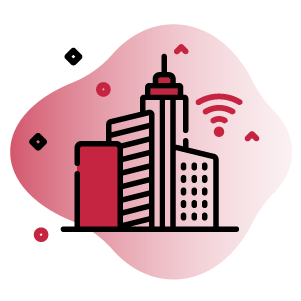
The emerging term ‘smart city’ includes a number of concepts, all of them, related to the sustainable economic development and the use of the current TIC technologies.
The smart cities offer integral solutions to daily inconveniences by integrating interactive communication systems with the deployment of physical devices such us sensors and actuators and finally, civic participation.
These cities are based on a series of basic constraints, such us those related to environmental aspects, fluency of communication between the system actors, shared use of resources and services and new technologies integration.
The actives deployed over the city are the main contribution of smart cities. For instance, the cars are a great contribution to personal mobility, allowing to reduce costs and to increase the sustainability for the citizens.
A ubiquitous integration of the intelligence technology allows smart cities’ actives to be mere specialized robots, which can smartly interact with the surrounding environment.
-
Technologies